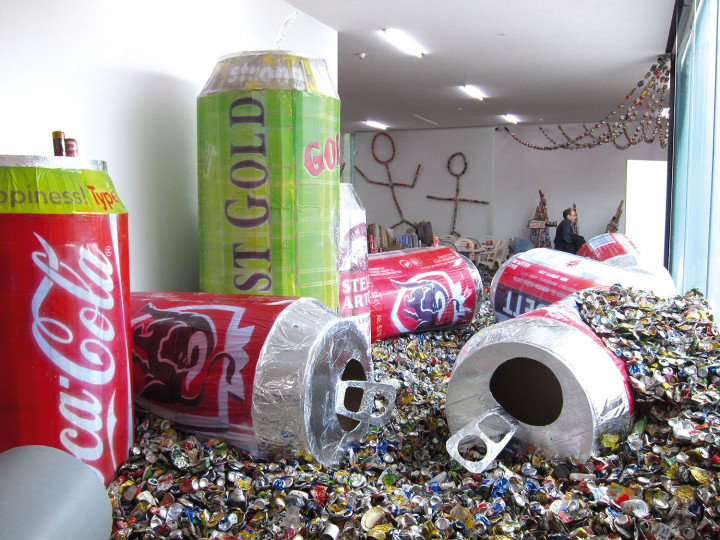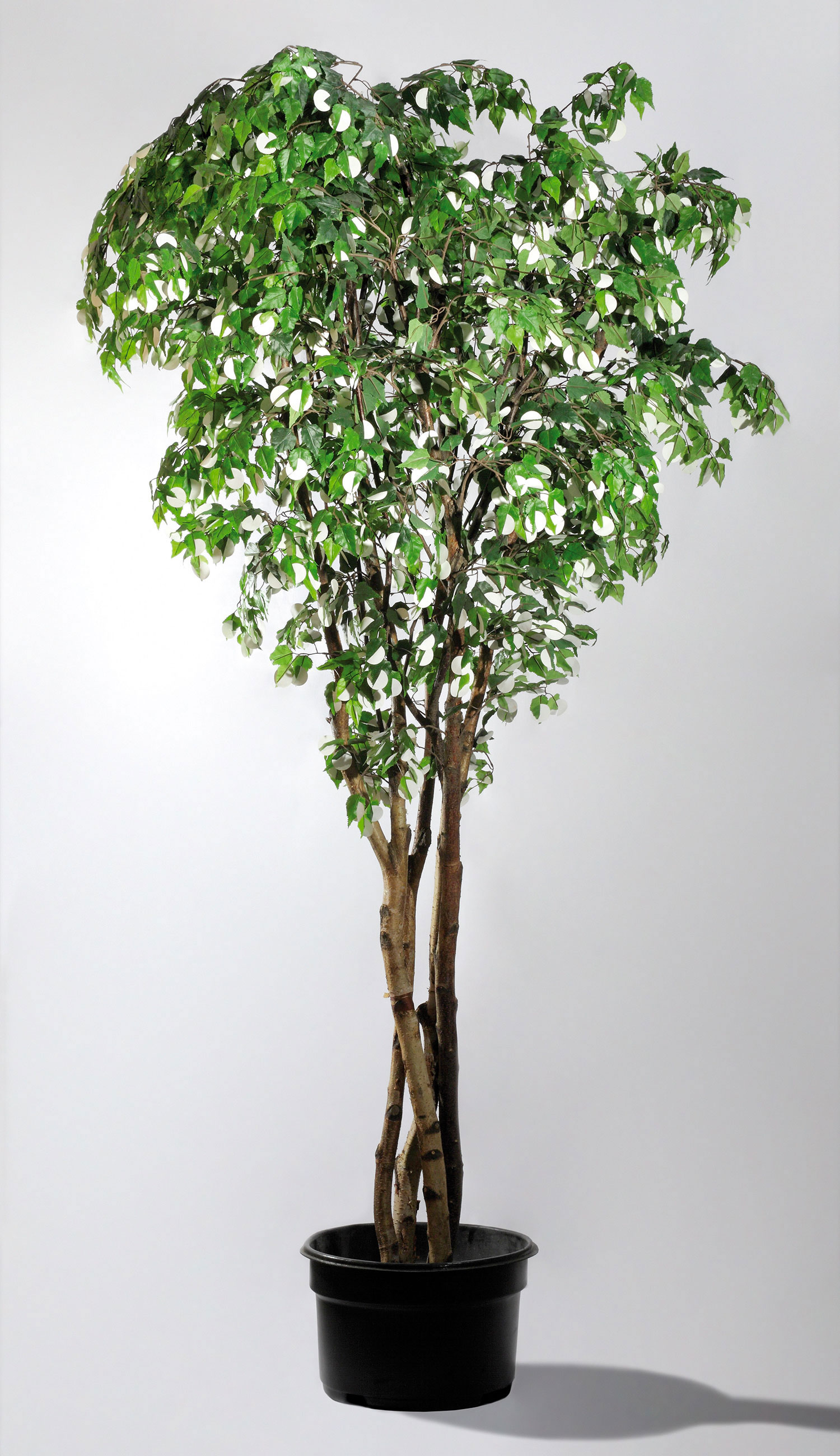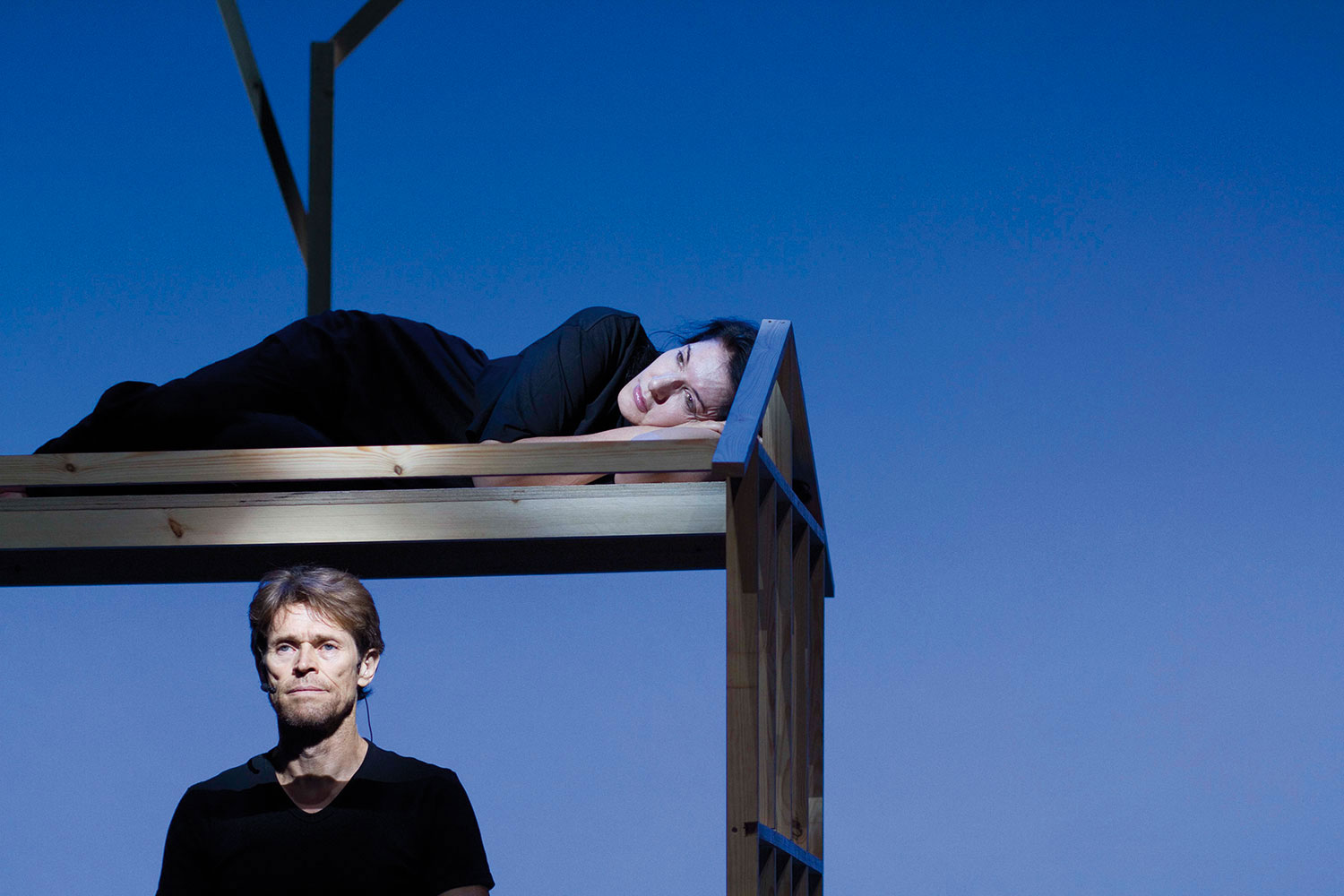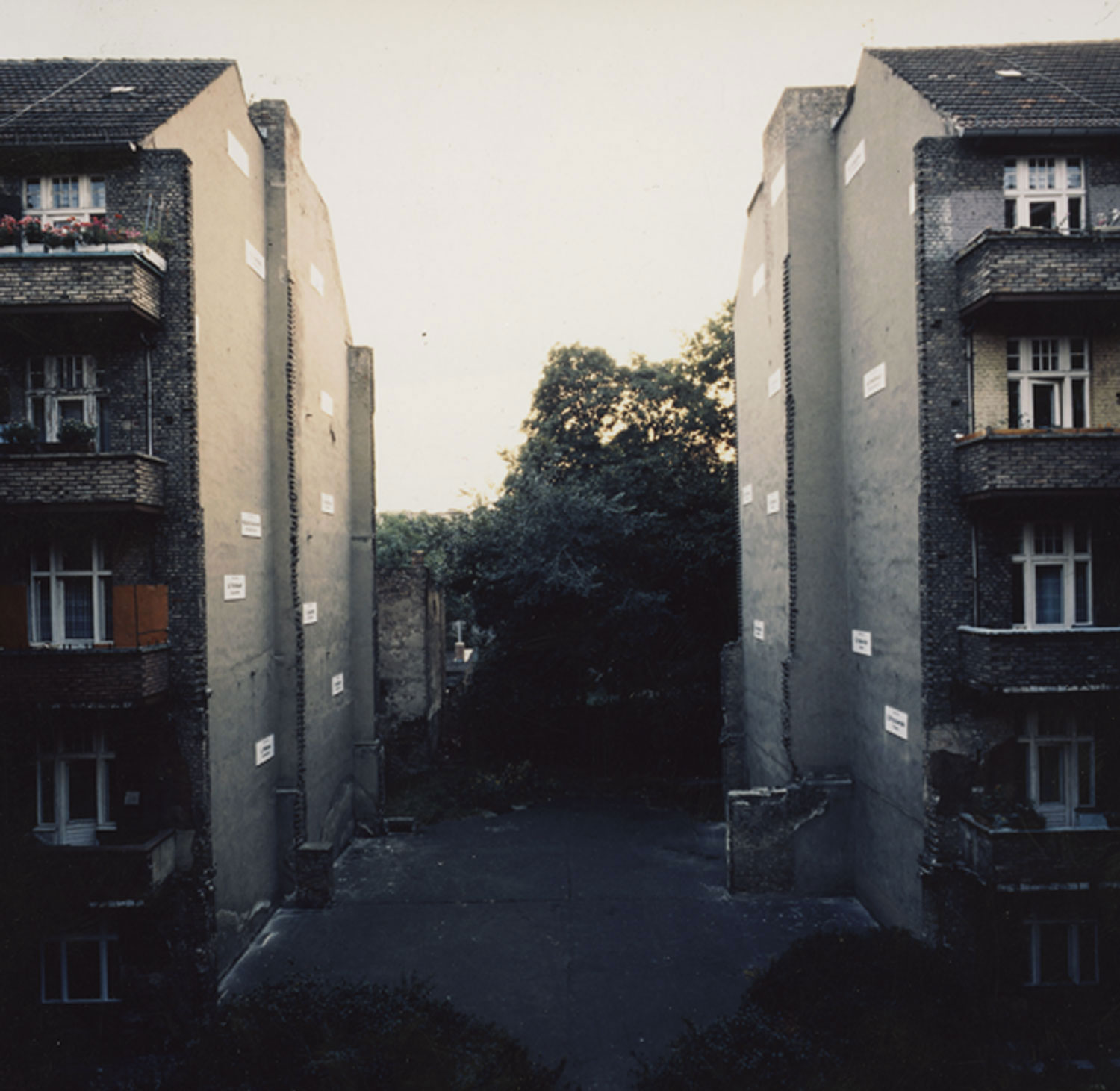
With his overloaded sculptural environments and uncompromising political sentiments, Thomas Hirschhorn has become one of the more influential artists internationally over the last decade. Discussion here ranges from his relation to landscape and art history, his public works, his impatience with democracy, his faith in the power of art, and, finally, to his plans for the Swiss Pavilion at the 54th Venice Biennale in June.
Matthew Schum: Your work exudes energy; your visual sensibilities communicate intensity. What kind of physical environment in Switzerland did you grow up in? Is there anything at all in your upbringing that can explain the ferocity of your art?
Thomas Hirschhorn: Nothing else than the world surrounding me can explain the intensity and the density of my work. There is nothing “personal” to explain this. I am not interested in “the personal” or “the social” as an artist. I am interested in life, in dream, in change, in action and in hope. I want to understand Art as a tool. A tool to encounter the world, a tool to confront reality and a tool for life, in the time I live in. I want my work to reflect the beauty and the incommensurability, the complexity and the chaos, the cruelty and the infinity of our world.
MS: I grew up in Minneapolis (where you have worked with the Walker Art Center — Cavemanman was installed there in 2006). You had a proposal there to put one of your giant books on Lake Street in an overlooked part of town. It never happened due to budgetary concerns; but I wonder, in new cities where there seems to be the right energy or circumstances, if you often find spots like that where you wish you could intervene.
TH: The Road-Side Giant-Book Project that I made in 2004 as a public artwork proposal for the Walker Art Center has indeed not yet been done. What I like about Lake Street is that it could be elsewhere, in another city, in another country, on another continent. Lake Street in Minneapolis/St. Paul is a truly universal spot. This project, as all of my works, aims to be a universal artwork — it could therefore be made in another city, another country, another continent.
MS: I ask these initial questions because the connection your work has to landscape seems so prevalent, whether in a cityscape or a cave. There is something veering towards the sublime in how your work overwhelms the viewer. It reflects the urban, natural and virtual containers that people float inside. Do you intentionally confuse or entangle the artificial and the sublime?
TH: My work is never site-specific or related to a specific context, and I am not confused or entangled. When you feel as if floating, it comes from my will to implicate you, to implicate you directly — from one to one — throughout my work. Not you as part of the “circle of evaluation,” but you as part of the “non-exclusive audience.” There is a “non-exclusive audience” in a museum but also on the street; there’s a “non-exclusive audience” in a commercial gallery, as well as in an institution. I truly want to work for a “non-exclusive audience.” The “non-exclusive audience” is not a target, but it’s the public I want to involve and include in my work. Another word for the “non-exclusive audience” is the Other. I am enclosing a diagram of the Specter of Evaluation for a better understanding.
MS: Switzerland is a very beautiful place, an orderly society, with extreme wealth. The paradoxes or responsibilities involved in being an international Swiss artist seem to have set the stage for your most challenging works.
TH: “Swiss artist”: I do not know what this really means — but I am Swiss and I am an artist — this is different. There is no paradox to be Swiss and to be an artist, since not all Swiss are bankers or watchmakers! And, as far as I know, not all Americans are cowboys or astronauts. On the contrary, it’s beautiful. There are artists all over the world, and the artist who is Palestinian is, I suppose, as happy as I — the Swiss — to be an artist. I don’t think that an artist coming from a specific country has more or less responsibility toward Art than another artist from elsewhere. I believe that toward Art, we all have the same responsibility: to do our work with love, with passion, with insistence, with the will of being in contact with reality and with the spirit of paying first for what we are doing. I believe that Art — because it’s Art — is universal. Universality means Justice, Equality, the Other, the Truth and the “One World.” And as an artist, I believe that Art, because it’s Art, has the power of transformation; the power of transformation of each human being; the power to transform a Bangladeshi, a Canadian, a Peruvian and a Swiss.
MS: Your Swiss-Swiss Democracy project at the Swiss Cultural Centre in Paris seemed to address this. You wrote, “I want to de-idealize democracy and I want to destabilize the good democratic conscience.” I think a lot of us were feeling that at the time. In your experience, can art adequately address democracy?
TH: I did not only feel it in 2004 or 2005, during the years Swiss-Swiss Democracy took place. The most recent events show us that we need to fight for democracy every day. We have to reinvent democracy at every instant, we have to struggle for and with democracy constantly and we can never lay back and think we’ve achieved something like “democracy.” I want to be a democrat but I refuse to become a democratized subject. The aim of Swiss-Swiss Democracy was to stand up as a democrat and not to sleep as a democratized subject. I wanted to question the institution Democracy; I wanted to confront this institution with the invention of a living, uncertain, creative, precarious, democratic, fun, productive self-authorization. I did this every day during two months at the Centre Culturel Suisse in Paris — every day with the only guideline of “Presence and Production”: every day presence and every day production. I did this with the philosopher Marcus Steinweg and with the theater director Gwenaël Morin and six actors and actresses. Art can address democracy — not adequately — because there is no adequacy; but also because the relationship between Art and democracy and Art and politics is a complex one; but Art can (because it’s Art) invent its own address to democracy and to politics.
MS: Swiss-Swiss Democracy, you said, was not a provocation but a kind of artistic siege of a satellite ministry. It led to some punitive defunding of the institution. Yours was a very specific action addressing universal problems. Are we witnessing an atrophying of democratic institutions across the board at this moment in history?
TH: First of all, did you know that the punitive defunding of the institution was abandoned after a year and the previous funding re-established? Because even the politicians who had voted this consequently to a hysterical media-produced scandal had to face the evidence after a while that their “punishment” was childish! I think it is important that this be known, mentioned and remembered. But the fact itself shed light (and believe me this was not my intention) on the democratic institution as being a sacred cow. What I just wanted to question is how democracy has turned into a sacred cow and produces “subjects of democracy.” I am convinced that the Tunisians, the Egyptians, the Libyans and all other people of the world who aspire for democracy don’t understand it as a sacred cow nightmare, but as a dream for freedom, free speech, equality, justice, one man = one vote or one woman = one vote. Such things that the Swiss have achieved by struggles and fights some hundreds of years ago, and even, concerning the vote of men and women, just a few decades ago! Isn’t this an example that shows us how, even in a democracy such as Switzerland, democracy is never achieved and never finalized?
MS: More recent work: Too Too – Much Much (2010) at the Museum Dhondt-Dhaenens, Belgium, was a great title, and work about quantity — itself a subject of controversy in your work. How did using tons of recycled aluminum cans come about and what was the material addressing? It seemed like a departure from your previous work because there was no adhesive involved.
TH: I am truthful to my materials, don’t worry! Also to adhesives. But I have indeed included aluminum cans to my materials for years (since Cavemanman). I love the materials I am working with. I love them because I chose them for myself! This is the important point and this is also what is political: the decision! It means to work with them and to insist on them. Furthermore, to decide for something means to pay the price for this decision. This is perhaps what you meant by “controversy”? My love is not based on a kitschy, narcissistic and selfish self-love but on the conviction that the materials are constitutive to an artwork and the decision for a material is a decision that is essential. And, because there is this love and this decision for it, I cannot change my material for “something else” or for “something new.”
MS: Speaking of adhesives, comparisons to your work are both common in print yet hard to substantiate given your profligate use of materials and simultaneous critique of material culture. I can’t be comfortable being specific, like splitting you between Andy Warhol and Joseph Beuys. I am curious, though, how you yourself would frame your work. What precedents in any art form do you continually relate back to?
TH: I myself certainly do not want to frame my work! And I myself do not constantly look back! What I want, and I think this is a valid ambition for an artist, is to create a new term of art, my own term of art — a term of art which establishes a critical corpus as such. I want to construct a critical corpus.
MS: Again, without getting too specific, your work resides in a kind of Bermuda Triangle between Pop, Minimalism and Arte Povera. There is the theatrical or bodily relationship to the viewer in your work found in Minimalism, a first-world deconstruction of propaganda with Pop, and a dissipation of materials found in Arte Povera. This combo unleashes a kind of gigantism or maximalism that breaks with the ambient environment in order to invite the audience into your world. Do you feel your spaces address the viewer as fantastic and quite heterogeneous to the outside world?
TH: I do not follow you into your Bermuda Triangle. I cannot comment on your art historical approach. I am not having ideas or phantasmagorias outside our world. I want to give Form. I base my work on my form and force field, which is divided into four parts: Love, Philosophy, Politics and Aesthetics. With each work, I want to touch each of these parts. It is not important that they be equally covered; but it is important that they all be engaged. I am aware that out of my form and force field, Love and Philosophy have a more obvious positive aspect; but I consciously decided to touch the Politics and Aesthetics, which both have a darker side and are considered more negatively. What I want is to touch the negative parts and not make things nicer than they are. I am absolutely positive but I think it is important not to understand this positiveness as something that excludes the negative. This is how I understand the world, as a unity, as a one — as a one world. And this is what I want to express in my artwork. My work wants to address the viewer as sovereign and emancipated and as someone who is not neutralized by facts, comments or opinions.
MS: The three movements mentioned above are immanent for contemporary artists, especially for sculptors after your work. How do you suppose working with everyday materials has changed since the ’60s? And how do you see it changing in recent years in order to stay current, filled with impact and obtrusiveness?
TH: Again I cannot follow or comment on your art-historian approach. I am an artist who has his work to do, and as somebody who works, who constructs a corpus that is a critical corpus; I cannot analyze it and, at the same time, be doing it. To me the work has to be done first. When I stop working, I can then, perhaps, analyze it. But I haven’t stopped working! I want to continue working, I want to continue insisting with my form and I will continue to make experiences with my passion about Art, today.
MS: Your Bataille Monument for Documenta 11 in 2002 was seen as a radical intervention. Can we expect any kind of scaling back in your work for Venice, or is it likely to be as visually maximalist and provocative as before?
TH: I will do a new work for the Venice Biennale. I cannot say what you can expect; but I expect of myself to do a generous, charged, enlightening, complex and dense artwork, which aims to implicate and to engage the non-exclusive audience through its form.
MS: How immersive can we expect it to be? Will the viewer be in the Swiss Pavilion in Venice or in a Thomas Hirschhorn display?
TH: I do not know what you are expecting. But I expect of myself to do an artwork that is based on the belief in autonomy of Art and of my own work of art. And I am working toward that autonomy, which can give my work its beauty and its absoluteness.
MS: In 2008, you ended a boycott on showing your work in Switzerland that began in 2003. What has changed in Switzerland since that time?
TH: I think it will no longer be possible to elect a federal councillor such as the one elected by the federal assembly in 2003. The one against whom I expressed (without implying others) my own boycott of Switzerland was a federal councillor, who was not re-elected by the same federal assembly four years later in 2007. I think it will no longer be possible to elect a federal councillor with the argument: it’s better to have it “inside the system” than “outside the system”! I am aware that nothing is definitely won: I have — we have to keep watchful; we have to stay alert in order to fight racism, fear of the stranger and self enclosure; but I know that I, myself, can do something. I can succeed in doing something I believe in and I am ready to pay the price for it. And I do know that all boycotts maintained until the end will be successful boycotts.
MS: Does your work at the Swiss Pavilion represent a kind of homecoming?
TH: My home is art. I never left home. My passport is Swiss — I never changed it.
MS: Does it address Swiss realities in any way?
TH: I very much hope that my work confronts realities and will work hard for it. Furthermore, universal realities — if they are really universal — concern the Swiss as well. Just in order to make it clear: to me to exhibit in the Swiss Pavilion at the Venice Biennale is a pleasure; it is a joy and it makes me happy. Why? Because the pleasure is to present or, if you want, to represent my artwork; because the joy is to present my understanding of making, now; and because what makes me happy is to work out my position as an artist today.
MS: Does it have a theme, subject or inspiration as your works have in the past?
TH: My work will have the title: Crystal of Resistance.





